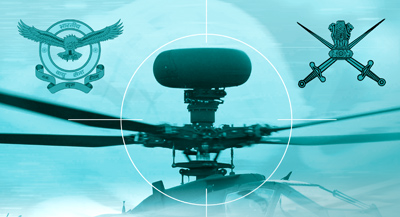INDIAN ARMED FORCES CHIEFS ON OUR RELENTLESS AND FOCUSED PUBLISHING EFFORTS

SP Guide Publications puts forth a well compiled articulation of issues, pursuits and accomplishments of the Indian Army, over the years

"Over the past 60 years, the growth of SP Guide Publications has mirrored the rising stature of Indian Navy. Its well-researched and informative magazines on Defence and Aerospace sector have served to shape an educated opinion of our military personnel, policy makers and the public alike. I wish SP's Publication team continued success, fair winds and following seas in all future endeavour!"

Since, its inception in 1964, SP Guide Publications has consistently demonstrated commitment to high-quality journalism in the aerospace and defence sectors, earning a well-deserved reputation as Asia's largest media house in this domain. I wish SP Guide Publications continued success in its pursuit of excellence.
The Silver Lining

A combined order of 317 helicopters for the army and the air force would harness several advantages, foremost being leveraging India’s position as a buyer in terms of unit costs because of the increased numbers.
A silver lining has emerged from the dark cloud of anomalies and controversies swirling around the scuttled Eurocopter deal. Hope has surfaced in the form of a better helicopter deal for the Indian armed forces. In less than a month after the thumbs down to Eurocopter for a contract to replace the Indian Army’s Chetak/Cheetah fleet, the Ministry of Defence (MoD) has started a global hunt to procure military helicopters—this time worth an estimated $1 billion (Rs 3,952 crore)—for the army as well as the air force. While the shopping list largely comprises the army’s order for 197 helicopters, the MoD has now combined the Indian Air Force’s (IAF) requirement of 120 helicopters to arrive at a total figure of 317 helicopters. The IAF was reportedly able to convince the MoD that if the army’s Chetak/Cheetah fleet needed replacement due to ageing, the air force’s requirement was as urgent if not more, as its own fleet of Chetak/Cheetah light helicopters is older than the army’s.
Why this reasoning had not prevailed right in the beginning remains a mystery. What, however, stands out is the total lack of synergy among the three services in matters of equipment procurement. The new defence procurement rules clearly mandate adoption of a common platform and tender process for similar and comparable defence systems required by the three armed forces. In reality, however, this practice has not been followed as each service pursues its cases of equipment acquisition in isolation of the other two. The combined order of the two services would hopefully start a precedent. Several positives can be harnessed in such a deal. Firstly, it would leverage India’s position as a buyer in terms of unit costs because of the increased numbers. Secondly, it would have a beneficial effect on after-sale service and product support. In addition, it could also help the country in getting better offset deals, including licence production and possible export to third countries.





